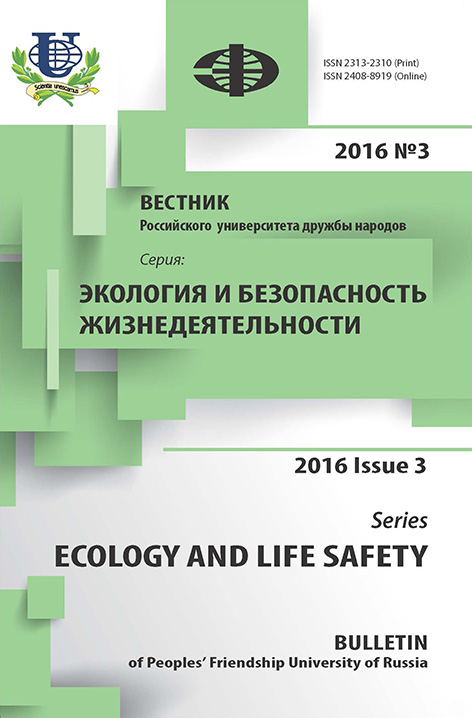ECOLOGICAL CHARACTERISTICS OF PLANT COVER IN SAND PITS OF MOSCOW REGION
- Authors: Dabbag A1, Zhukova AD1, Ulanskaya Y.V1
-
Affiliations:
- Peoples’ Friendship University of Russia
- Issue: No 3 (2016)
- Pages: 26-34
- Section: Articles
- URL: https://journals.rudn.ru/ecology/article/view/14446
Cite item
Full Text
Abstract
Sand mining is used to extract sand through an open pit. After completion of mining activities sand pits usually undergo rehabilitation: firstly they are graded and then planted with trees and shrubs, but very often sand pits are abandoned to regenerate themselves. The sand pit becomes a source of dust and a hardly healed wound on the earth’s surface. In order to provide an adequate revegetation on such substrates, it is necessary to study ecological peculiarities of growing plants in a very specific environment characterized by high stiffness of slopes and high mobility of the substrate. The vegetation of the sand pits is expected to have a xerophytic habitus and will be similar to desert plants, but that is not the case. The zonal component affects the habitus of the vegetation. However all plants of sand pits have characteristics of psammophytes directly or indirectly. The flora and vegetation of Zvenigorodsky and Dzerzhinsky sand pits on the slopes of southern and northern exposures were studied during this work. It was found that the projective cover constitutes 20-30%. Species diversity is determined by the successions occurring spontaneously after a rough anthropogenic intervention, under the influence of such environmental factors as lighting, texture, moisture and richness of soil. Exactly 98 species of plants were discovered, diversity on the southern slopes was more than twice as higher than on the northern ones. Mesophytes dominated among the plants with a high occurrence, but a lot of xeromesophytes were found as well. The dominance of therophytes in sand pits was not confirmed: the predominance of hemicryptophytes as in the Middle zone of Russia is identified. We can only note the predominance of hemicryptophytes on the northern slopes, as well as the migratio of phanerophytes to the southern slopes. According to the classification of life forms by I. G. Serebryakov, sand slopes are dominated by herbaceous perennial polycarpics, among which long- and short rhizome plants and tap rooted plants are in majority. A significant proportion of tap rooted plants is due to their high degree of adaptation to strong light conditions and resistance to drought. Dominant ecological-coenotic group is that of meadow plants. One should note the lack of affinity of sand pits species diversity with neighboring plant communities (coefficient of P. Jaccard is equal to zero). There are weed and wetland species that migrate on slopes from the bottom of the sand pits. The rate of adventive species is low.
About the authors
A Dabbag
Peoples’ Friendship University of RussiaPodolskoye shosse, 8/5, Moscow, Russia, 113093
A D Zhukova
Peoples’ Friendship University of RussiaPodolskoye shosse, 8/5, Moscow, Russia, 113093
Yu V Ulanskaya
Peoples’ Friendship University of RussiaPodolskoye shosse, 8/5, Moscow, Russia, 113093
References
















